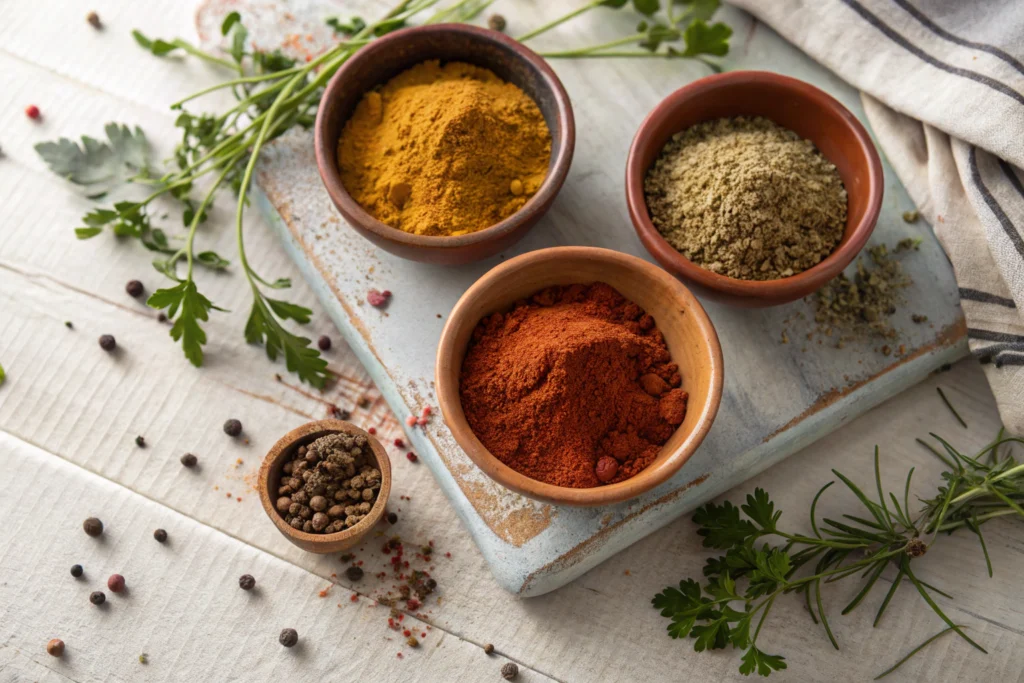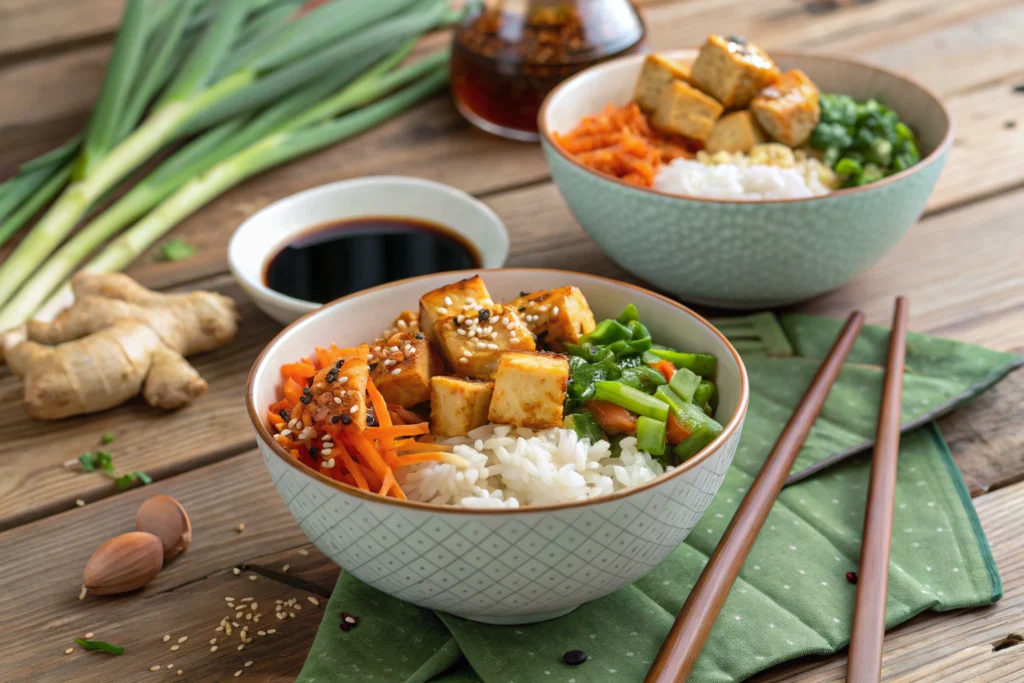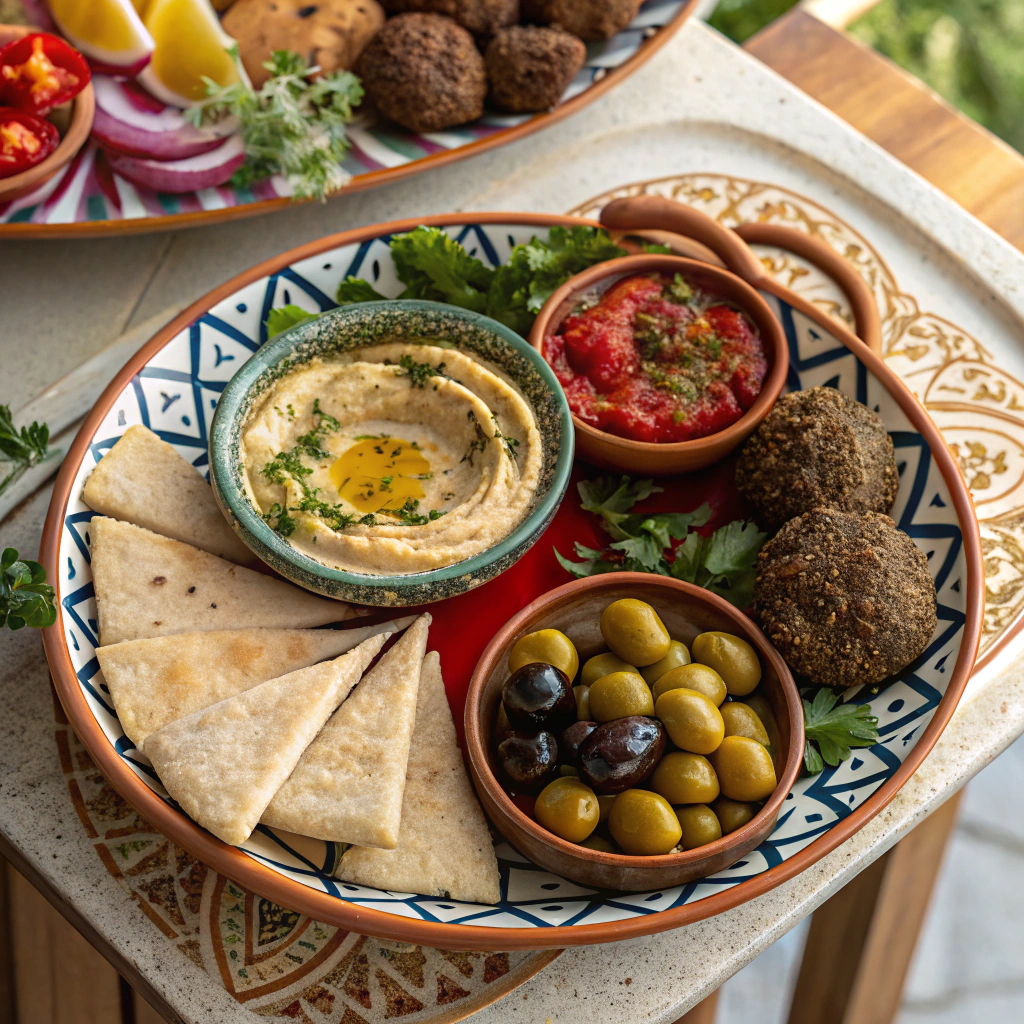If you had told me ten years ago that going vegan would expand my flavor world, not shrink it, I would’ve probably laughed through a mouthful of my mom’s ricotta-stuffed shells. But the truth? Exploring global flavor inspirations for vegan cooking didn’t just keep things interesting, it completely changed how I cook.
Table of Contents
Growing up in a small Midwestern town, comfort food was meat and potatoes, maybe some pasta on Sundays. When I chose to go vegan in my twenties, I was lost. I thought I had to give up comfort. Flavor. Tradition. Until I started looking outward. Toward the spice markets of Marrakech. The street stalls of Bangkok. The home kitchens of Oaxaca. That’s where the magic began.
So, here it is. Everything I’ve learned about bringing the world to your table, one plant-based meal at a time.
Why Global Flavor Inspirations for Vegan Cooking Matter
Let’s be real: most of us didn’t grow up associating “vegan” with flavor-packed meals. For me, global vegan cooking was like opening a window. Suddenly, I wasn’t limited by the same old three-seasonings-and-hope-for-the-best approach. I was layering spices. Building flavor. Cooking with stories.
Using global flavor inspirations for vegan cooking connects you to cultures where plant-based eating is part of the norm. You get bold, comforting, complex dishes that don’t rely on meat or dairy to sing.
Spices That Changed My Life: From India to Ethiopia
The first time I smelled toasted cumin, mustard seeds popping in oil, and ground turmeric in one pan? I was hooked. Spices don’t just flavor food, they build it. My favorite global blends:
- Garam Masala (India): adds warm depth to lentils, curries, and roasted veggies
- Berbere (Ethiopia): spicy, aromatic, perfect for stews and tofu
- Ras el Hanout (North Africa): floral and earthy, amazing in couscous or chickpeas
Having a few of these on hand can instantly elevate your cooking.

Asian Vegan Cooking with Big Flavor
Asian cuisines taught me how to hit every flavor note. Sweet, salty, sour, bitter, umami? All in one dish.
- Thai: Use red curry paste + coconut milk + lime for deeply flavorful soups
- Japanese: Miso + tamari = instant umami boost
- Korean: Gochujang gives a spicy, funky kick to anything from stir-fries to vegan bibimbap
These ingredients are staples in global flavor inspirations for vegan cooking, especially when you want to bring that comforting punch.

Latin American Twists in Plant-Based Recipes
Latin food is deeply soulful, full of layered sauces and bright, spicy components. My must-haves:
- Sofrito: A base of onions, peppers, garlic, and herbs
- Aji Amarillo: A Peruvian pepper that’s spicy and fruity
- Mole: Complex, rich sauce often made with dried chilies and cocoa (yes, it can be vegan!)
One of my favorite tricks? Using global flavor inspirations for vegan cooking to transform simple beans and rice into a feast.
Middle Eastern Vegan Staples That Never Get Old
Middle Eastern food is a treasure chest for vegan eaters. It’s already packed with legumes, grains, herbs, and spices.
- Za’atar: Sprinkle it over roasted cauliflower or use in salads
- Tahini: Creamy, nutty, amazing in sauces and dressings
- Sumac: Tangy and vibrant, I love it on lentils or chickpea stews
These flavors are bold but balanced, perfect for daily cooking.

North African Heat and Depth
When I discovered preserved lemons, my cooking changed overnight. North African flavors bring a unique balance of spice, acid, and warmth.
- Harissa: A chili paste that brings heat and smokiness
- Preserved Lemons: Bright, salty, and deep, perfect in stews
- Cinnamon + Cumin: An iconic combo that adds comfort to veggie dishes
These global flavor inspirations for vegan cooking work beautifully in slow-cooked meals or simple bowls.
Vegan Comfort Food with a Mediterranean Kick
Think olives, sun-dried tomatoes, fresh herbs, and garlic. Mediterranean flavors are naturally plant-forward and rich in umami.
- Pasta with roasted peppers and olive tapenade
- Stuffed grape leaves with lemony rice
- Grilled eggplant with garlic tahini
Comforting and elegant, this region makes it easy to cook vegan.
Caribbean Vegan Vibes That Bring the Fire
The Caribbean doesn’t hold back and I love it for that.
- Jerk seasoning: Allspice, scotch bonnet, thyme
- Callaloo: Leafy greens cooked with onions and coconut
- Tamarind: Sweet, sour, and essential in sauces
These flavors are perfect for grilling, stewing, or bold rice dishes.
Southeast Asian Flavors: Bright, Fresh, Bold
I used to think tofu was boring. Then I learned about lemongrass marinades.
- Lemongrass + Ginger: Zesty and fresh
- Tamarind Paste: Brings tangy depth
- Coconut Milk: Balances heat with creamy richness
Southeast Asia gives you everything: brightness, spice, umami, and balance.
Vegan European Classics With a Twist
Europe has some hidden vegan gems. You just have to look beyond the cheese.
- Ratatouille (France): Layers of vegetables and herbs
- Agrodolce (Italy): Sweet and sour glaze for veggies
- Gazpacho (Spain): Cold tomato soup with a garlic punch
These dishes prove that global flavor inspirations for vegan cooking aren’t just exotic, they’re close to home too.
Vegan Street Food from Around the World
Street food is where flavors shine.
- Falafel: Crispy chickpea balls from the Middle East
- Bao Buns: Steamed buns filled with tofu or mushrooms
- Tacos: Endless combinations of spicy beans, avocado, and salsas
Quick, cheap, and totally satisfying.
Sauces & Condiments That Bring Global Flavor Inspirations for Vegan Cooking
Never underestimate the power of a good sauce.
- Sriracha: For heat and tang
- Chimichurri: Herby, garlicky, and perfect for roasted veggies
- Chutneys: Sweet and spicy condiments that wake up grains or tofu
Condiments are a must for vibrant, flavor-packed vegan meals.
How to Build a Global Vegan Pantry
Start with the basics. Then expand.
- Spices: cumin, turmeric, smoked paprika, cinnamon
- Condiments: tamari, miso, tahini, harissa
- Dry goods: lentils, chickpeas, noodles, rice
This pantry is the foundation for global flavor inspirations for vegan cooking anytime, even on a weeknight.
My Go-To Recipes Inspired by Global Flavor Inspirations for Vegan Cooking
Some of my faves you can try:
- Ethiopian Lentil Stew (misir wat)
- Thai Green Curry with tofu and veggies
- Middle Eastern Chickpea Wraps with tahini sauce
Quick to make, big on flavor.
Balancing Bold Flavors Without Animal Products
It took me years to learn this:
- Acid: Lemon, vinegar, tamarind
- Texture: Roasted nuts, crispy tofu
- Umami: Mushrooms, miso, fermented sauces
Layering these makes your food crave-worthy.
Kid-Friendly Global Flavor Inspirations for Vegan Cooking
Make it fun, not fussy.
- Use milder spices
- Focus on textures kids love (crispy, creamy)
- Keep portions small and colorful
My daughter loves tofu bites with mango chutney and turmeric rice.
Budget-Friendly Global Vegan Cooking at Home
It’s cheaper than you think:
- Buy spices in bulk
- Use dry beans and lentils
- Cook with seasonal produce
Global vegan meals don’t need specialty stores or fancy ingredients.
Travel Memories That Influenced My Vegan Recipes
A quick one: I was in Lisbon, trying a local market’s vegetable stew. The cook, an older woman with warm eyes, gave me her spice mix. I came home and recreated it with chickpeas and turnips. It’s still one of my go-to soups.
These moments keep me inspired.
How to Start Exploring Global Flavor in Your Vegan Kitchen
- Pick one region per week
- Try a new spice
- Follow home cooks from different cultures
This journey is delicious. Go slow. Stay curious.
Frequently Asked Questions
What are the best global spices for vegan cooking?
I always recommend starting with cumin, turmeric, smoked paprika, and cinnamon. They’re versatile and instantly bring warmth to plant-based dishes. Once you’re comfortable, try blends like garam masala (India), berbere (Ethiopia), and ras el hanout (North Africa). These spice mixes do the heavy lifting when it comes to building deep, complex flavors. You don’t need to master every spice overnight. Just start playing around, taste as you go.
How do I add umami to vegan recipes using global ingredients?
Look for fermented and aged products. Miso, tamari, fermented chili pastes like gochujang, or even black garlic can add huge depth. Mushrooms, especially dried ones bring earthy, meaty notes. And don’t forget tomato paste, sun-dried tomatoes, and olives. Layering these in different ways gives your vegan cooking that crave-able savoriness. Umami doesn’t need cheese or meat.
What cultures have the most vegan-friendly traditional dishes?
India tops the list with its vast array of vegetarian cuisine, much of it easily vegan. Ethiopia is another favorite injera with lentil stews, collards, and split peas. Middle Eastern, Thai, and Mediterranean diets also have tons of naturally plant-based options. These cultures have cooked without dairy or meat for centuries, often for religious or economic reasons, so their food is rich in flavor and creativity.
Are global ingredients expensive for vegan cooking?
Not if you shop smart. Bulk spice shops, ethnic groceries, and even online marketplaces often sell staples like lentils, rice noodles, coconut milk, and spices at better prices than big-box stores. Start small: one spice blend, one sauce. Build slowly. Over time, you’ll have a pantry full of affordable tools to make any dish exciting. It doesn’t have to break the bank.
How can I find authentic global vegan recipes?
Look for food bloggers and creators from the cultures you’re interested in. Support cookbooks written by native authors. Follow hashtags like #veganethiopianfood or #plantbasedlatin on Instagram. You’ll get inspiration and education. You can also adapt traditional recipes by swapping out the animal products, just stay respectful to the original dish and culture.
How do I make international vegan meals kid-friendly?
Start mild. Avoid too much spice, but keep flavor through herbs and sweet-savory combos. For example, a coconut-lime lentil curry with rice is a hit with my daughter. Use fun shapes (like bao buns or tacos), let kids pick toppings, and keep meals colorful. Global flavors don’t have to be overwhelming, they can be a fun way to teach kids about the world.
Final Thoughts
I never expected my little vegan kitchen to feel like a passport. But here I am, making Moroccan tagines, Thai curries, and Peruvian stews in a Midwest home built in 1953. My dad still asks what’s for dinner like I’m going to say meatloaf, and I still surprise him.
Cooking with global flavor inspirations for vegan cooking didn’t just help me stay vegan it made me fall in love with food all over again. And trust me, it can do the same for you.
So go ahead. Try a new spice this week. Buy that tamarind paste. Your taste buds will thank you.
